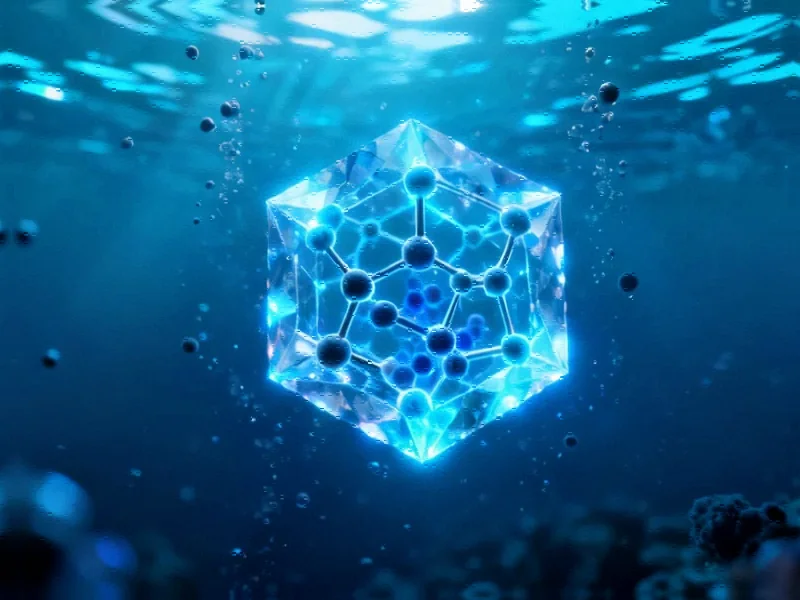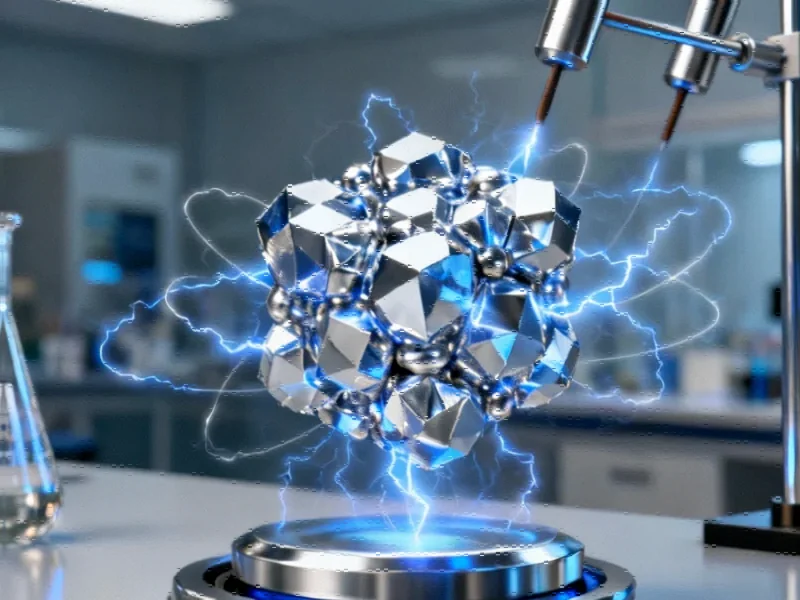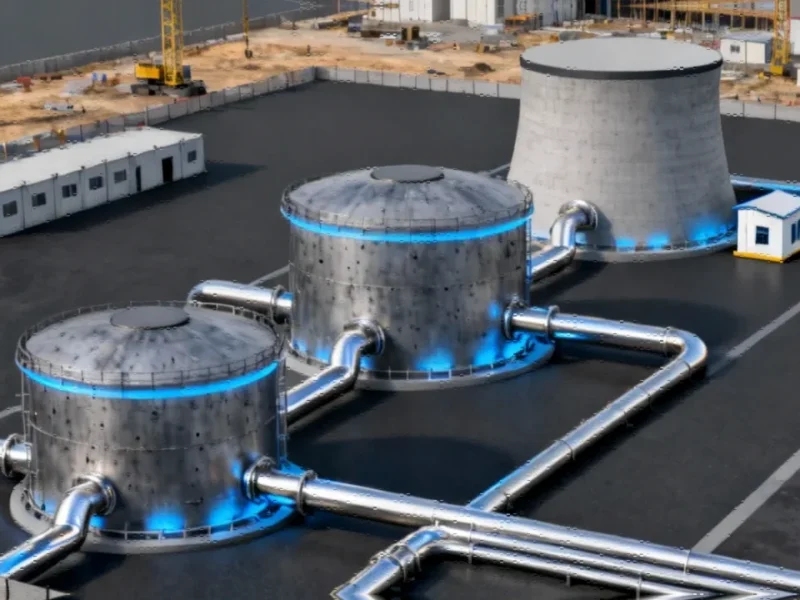Advanced Polymer Material Revolutionizes Seawater Uranium Extraction
Researchers have developed a groundbreaking cyclized polyacrylonitrile-polyethyleneimine conjugate that significantly enhances uranium extraction capabilities from natural seawater, according to recent reports in Nature Communications. The novel material, created through sophisticated chemical synthesis and thermal processing, demonstrates remarkable efficiency in capturing uranium ions under realistic marine conditions.
Material Synthesis and Characterization
The manufacturing process begins with polyacrylonitrile (PAN) sample material that undergoes thermal cyclization at 210°C under nitrogen atmosphere. Sources indicate that the resulting cyclized polyacrylonitrile (CPAN) serves as the foundation for the advanced composite material. Through hydrothermal reaction with polyethyleneimine (PEI) in methanol solution at 140°C for 12 hours, researchers created what they term CPAP composites with varying PEI concentrations.
Analysts suggest the material’s effectiveness stems from its unique structural properties, characterized as a cyclic compound architecture that provides multiple binding sites for uranium capture. The report states that comprehensive characterization using XRD, SEM, TEM, and XPS confirmed the material’s crystalline structure and chemical bonding characteristics essential for uranium adsorption.
Marine Environment Testing Protocol
To evaluate real-world performance, researchers conducted extensive flow-through adsorption experiments using natural seawater collected from Dachangshan Island, Dalian, China. The testing methodology reportedly simulated actual ocean conditions with continuous seawater flow at 200 mL per minute while maintaining solar-like illumination using xenon lamps equipped with AM 1.5G filters.
The experimental design included rigorous controls and triplicate measurements to ensure data reliability. According to the analysis, the material maintained consistent performance throughout the 10-day testing period, with seawater renewal every 6 hours to prevent saturation and maintain non-equilibrium adsorption conditions. This approach reflects broader industry developments in environmental technology testing protocols.
Enhanced Uranium Capture Mechanism
The research team employed molecular dynamics simulations to understand the material’s uranium capture mechanism at the atomic level. Reports indicate that simulations revealed how the polymer chains interact with uranyl ions in aqueous environments, with the material demonstrating particular affinity for uranium species among competing metal ions.
Laboratory adsorption tests showed the material achieved optimal performance at neutral to slightly basic pH conditions, matching typical seawater environments. The adsorption capacity reportedly followed pseudo-second-order kinetics, suggesting chemical adsorption as the rate-limiting step. These findings contribute to ongoing related innovations in materials science and separation technology.
Antibacterial Properties and Environmental Compatibility
A significant advantage of the CPAP material, according to researchers, is its inherent antibacterial properties. Testing against marine-relevant bacteria including Escherichia coli, Staphylococcus aureus, Pseudomonas xiamenensis, and Marinobacter species demonstrated substantial bacterial inhibition rates under both light and dark conditions.
The report states that this antibacterial characteristic is crucial for long-term deployment in marine environments, where biofouling typically reduces adsorption efficiency. The material’s stability and reusability were confirmed through six consecutive adsorption-desorption cycles using dilute nitric acid for uranium recovery, aligning with current market trends toward sustainable material design.
Field Deployment and Practical Applications
For real-world validation, researchers conducted field tests where CPAP adsorbents were deployed in mesh bags at the sea surface using a buoy-anchor system. After 30 days of continuous exposure to ocean currents, the material demonstrated maintained uranium adsorption capacity, with successful recovery using 0.01 M sodium hydroxide and subsequent nitric acid treatment.
The technology represents a significant advancement in polyacrylonitrile-based materials for resource extraction. According to sources, the self-adaptive properties of the CPAN-PEI conjugate allow it to maintain performance under varying marine conditions, offering potential for scalable uranium extraction from the world’s oceans. This development coincides with recent technology advancements across multiple scientific disciplines.
Future Implications and Research Directions
The successful development of this advanced polymer composite opens new possibilities for sustainable uranium extraction from seawater, which contains approximately 4.5 billion tons of dissolved uranium. Researchers suggest that further optimization could lead to commercially viable seawater uranium extraction systems, potentially contributing to nuclear fuel sustainability.
The comprehensive study, including detailed materials characterization, molecular dynamics simulations, and both laboratory and field testing, provides a robust foundation for future development of advanced adsorption materials for environmental applications and resource recovery from complex aqueous systems.
This article aggregates information from publicly available sources. All trademarks and copyrights belong to their respective owners.
Note: Featured image is for illustrative purposes only and does not represent any specific product, service, or entity mentioned in this article.



